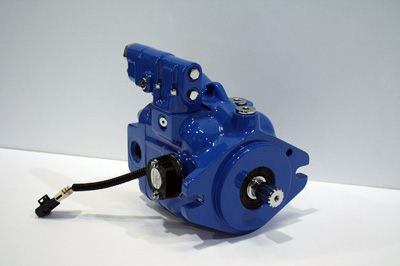Gear pumps are a popular choice in the hydraulics industry. Generally reliable and inexpensive, gear pumps have been getting the job done for decades. What could go wrong? Depending on the specifications of the machine you’re building, here are five reasons you may want to consider moving to piston pumps.
-

Eaton’s X20 piston pump
Higher horsepower — The higher the horsepower (hp) on your machine, the more likely you will save significant fuel by switching to a piston pump. Gear pumps are fixed displacement—continually providing the same flow. As horsepower increases, more flow is required, and the gear pump wastes more energy by not varying flow based on demand.
- Efficient multitasking — As more is demanded of every machine, original equipment manufacturers (OEMs) are adding functions. Each function often requires different flow which a piston pump can adjust to, providing efficient use of power resulting in less wasted energy than a constant flow gear pump.
- Increased control — Gear pumps can only be controlled through valving and a manifold, whereas piston pumps are available with multiple control options. A few of the options available are load sense, pressure compensation, electronic displacement, torque, electronic inverse proportional pressure and remote pressure control. With these controls, moving from a gear to a piston pump can help machine designers eliminate components and increase design flexibility.
- Improved cooling — Cooling needs vary widely from machine to machine, depending on duty cycle, operating environment and more. If the cooling needs are variable, shouldn’t the cooling system be variable as well? With a piston pump and inverse proportional pressure control, a fan drive system can react to temperatures, speeding up fan speed as oil temperature rises and slowing down when it cools.
- Efficiency — Ultimately, each point listed here circles back to machine efficiency. Continuous flow works in some equipment, but as regulations are requiring more efficient machines, variable piston pumps can help designers accomplish higher horsepower, more work, increased control and improved cooling without sacrificing efficiency.
This article was contributed by Sonya Anderson, global product manager, open-circuit piston pumps, Eaton
Filed Under: Mobile Hydraulic Tips